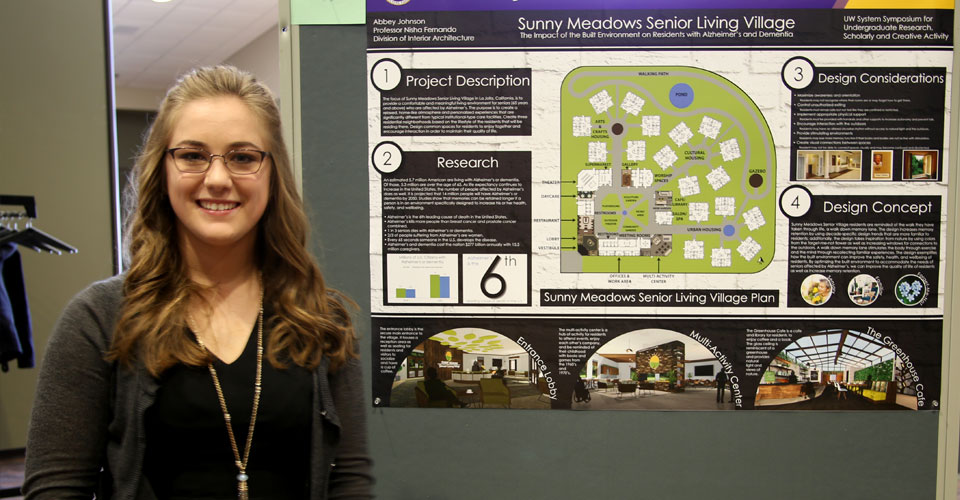

Providing a comfortable and meaningful living environment for seniors affected by Alzheimer’s in a relaxed, home-like atmosphere is an important goal for many health care organizations. UW-Stevens Point senior interior architecture student Abbey Johnson shared her design to meet this goal at the 17th Annual UW System Symposium for Undergraduate Research, Scholarly and Creative Activity on April 20, 2018.
Johnson presented “Sunny Meadows Senior Living Village: The Impact of the Built Environment on Residents with Alzheimer’s and Dementia” at the symposium, hosted by UW-Green Bay. This annual event highlights undergraduate student research projects from all academic disciplines on a wide variety of topics through research poster presentations, oral presentations, gallery exhibits and artistic performances.
Johnson performed this research and design project as a part of IA 418 Advanced Studio II under the direction of Prof. Nisha Fernando.
Abstract:
An estimated 5.5 million American are living with Alzheimer’s or dementia. Of those, 5.3 million are over the age of 65. As life expectancy increases in the United States the number of people affected by Alzheimer’s does too. 16 million people are projected to have Alzheimer’s or dementia by 2050. Studies show that memories can be retained longer if a person is in an environment designed to increase his or her health, safety, and wellbeing.
The focus of Sunny Meadows Senior Living Village is to provide a comfortable and meaningful living environment for seniors affected by Alzheimer’s. The purpose is to create a relaxed, home-like atmosphere that contrasts typical institutional-type care facilities.
The research examines design challenges related to seniors and those affected by Alzheimer’s. It studies literature and data about the disease as well as conducts case studies based on previous design solutions. The project provides revolutionary solutions to the design problems with the concept, “A Walk Down Memory Lane.”
The design increases memory retention by using decade specific design trends familiar to residents. A walk down memory lane stimulates the body through exercise and the mind through recollecting familiar experiences. The design exemplifies how the built environment can improve the safety, health and wellbeing of residents. By optimizing the built environment to accommodate the needs of seniors affected by Alzheimer’s, we can improve the quality of life of residents as well as increase memory retention.
